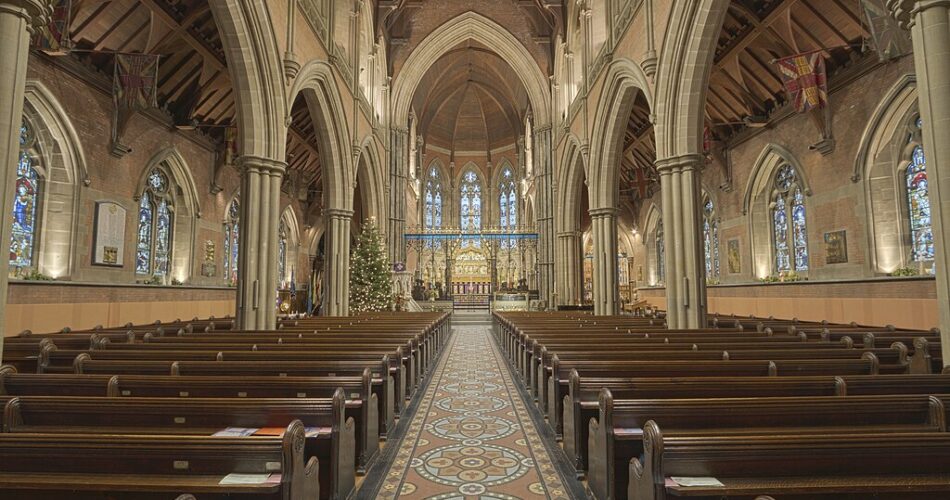They are going a bit too far.
A historic church in England is facing significant structural and aesthetic damage, endangering medieval artifacts, due to the diocese’s adherence to the Church of England’s stringent net-zero carbon policy, which has led to the refusal to replace broken-down gas boilers.
St. John the Baptist Church in Tideswell, Derbyshire, also known as The Cathedral of the Peak, has been without heating since October 2023 when three gas boilers failed during a storm flood, as reported by The Telegraph. Although the initial flooding from Storm Babet was the immediate cause, the Church of England’s environmental regulations have prevented any efforts to replace the boilers. Churchwarden Peter Robinson and Assistant Churchwarden Mike Burrell expressed frustration, noting that the Diocese of Derby has consistently denied requests to replace the old boilers. The lack of suitable green alternatives for the historic building has only added to their difficulties.
In February 2020, the Church of England’s General Synod committed to achieving net-zero carbon emissions by 2030, labeling the “global climate emergency” as a “fundamental injustice.” This commitment was formalized in an action plan approved in 2022.
The prolonged absence of heating has led to dampness within the church walls, jeopardizing the condition of historic carvings and valuable books. The congregation, many of whom are elderly, has had to endure services in frigid conditions, with minimal relief from small personal heaters.
Parishioner Joy Bramley, 92, highlighted the dire situation: “We are still in an absolute stalemate. What worries us most is the duty of care towards our parishioners, many of whom are over 80. But we are also deeply concerned about the church’s fabric, which has stood for centuries and is now becoming damp and affecting the beautiful carvings.”
With winter approaching, the congregation dreads the coming season after the harsh conditions experienced last winter. Visitor numbers have dropped significantly from an annual high of 33,000, with the harsh conditions deterring tourists and impacting the church’s income.
Bramley described the difficult conditions: “We were all bundled up in mufflers, multiple layers of coats, boots, and socks. We tried small heaters in a few pews, but they only warmed our toes slightly because the building is so vast. Imagine attending a funeral in such cold conditions.”
The church has investigated various heating options, including biomass, solar, electric, and air source heat pumps, but logistical issues and insufficient infrastructure, such as limited village electricity supply, have hindered these solutions. The National Grid has indicated that the local power supply cannot support a strong electric heating system, though diocese officials suggest that direct negotiations with the Grid might offer a different result.
The Church of England plans to invest £190 million ($250 million) between 2023 and 2031 to help churches cut carbon emissions, according to its “Routemap to Net Zero Carbon by 2030.” The plan underscores the urgency of transitioning to net-zero carbon: “Every delay in our progress towards net zero carbon will result in suffering and even death for our human neighbors and the rest of God’s creation. Acting now is not only a matter of justice but also a key aspect of our commitment to caring for creation.”
